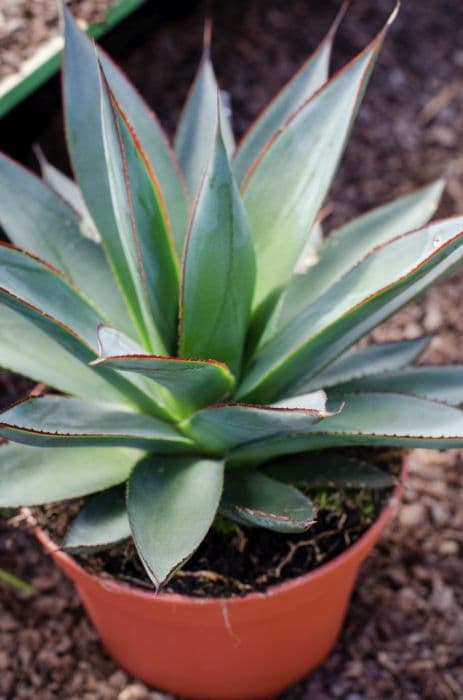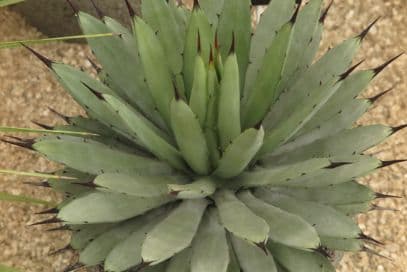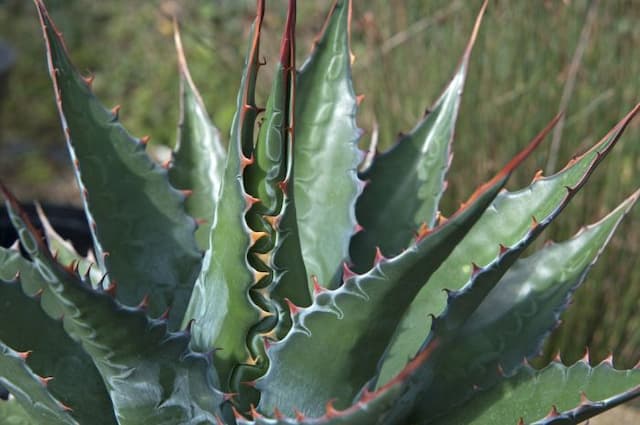Greilhuber's Squill Scilla greilhuberi

ABOUT
Scilla greilhuberi, often known simply as Scilla, is a delightful flowering plant that adds a splash of color to the surroundings. Accompanying the slender, green foliage, the Scilla displays captivating star-shaped flowers that exude charm. Intricately detailed, these blooms typically emerge in a striking blue hue that can sometimes border on purple, depending on the variety, thus presenting a pleasing aesthetic contrast. The leaves of the Scilla are typically narrow and linear, emanating from the base of the plant and creating an orderly and neat appearance. The flowers themselves grow on flower stalks that rhythmically rise above the foliage, clumping together in an umbel-like fashion, giving the impression of a delicate floral canopy. Each individual flower is a vision of symmetry with a defined center and radiating petals. The overall visual impression of the Scilla is one of a vibrant and robust plant that has a natural ease for capturing the eye and becoming a highlight in gardens and natural settings alike. Despite its delicate looks, the Scilla is known for its hardiness and ability to thrive in a variety of conditions, making it not only a visual treat but also a preferred choice for plant enthusiasts.
About this plant
 Names
NamesFamily
Asparagaceae
Synonyms
Unfortunately, there are no widely recognized common names for Scilla greilhuberi; it is primarily known by its scientific name.
Common names
I'm sorry, but no synonyms for Scilla greilhuberi could be found as of my knowledge cutoff date in 2023, so the basic scientific name provided remains as is.
 Toxicity
ToxicityTo humans
Scilla greilhuberi, commonly known as Squill, contains compounds that can be toxic to humans if ingested. The plant, particularly its bulbs, contains cardiac glycosides, which can lead to symptoms such as nausea, vomiting, diarrhea, and more serious cardiac effects like heart irregularities or palpitations if ingested. In severe cases, Squill poisoning could result in increased heart rate or dangerously low blood pressure, which could be life-threatening. Handling the plant may also cause skin irritation due to its saponin content.
To pets
Scilla greilhuberi, also known as Squill to pets, can cause toxicity if ingested. Just as in humans, the toxic compounds, which include cardiac glycosides, primarily reside in the bulbs of the plant. A pet that consumes any part of the Squill may exhibit symptoms such as vomiting, diarrhea, abdominal pain, and in severe cases, possibly cardiac abnormalities that could be fatal. It is important for pet owners to ensure that this plant is out of reach of their animals to prevent any accidental ingestion.
 Characteristics
CharacteristicsLife cycle
Perennials
Foliage type
Deciduous
Color of leaves
Green
Flower color
Blue
Height
6 inches (15 cm)
Spread
3 inches (7.6 cm)
Plant type
Bulb
Hardiness zones
7
Native area
Turkey
Benefits
 General Benefits
General Benefits- Aesthetic appeal: Scilla greilhuberi, more commonly known as Siberian squill, produces vivid blue to purplish flowers that beautify gardens, parks, and natural landscapes.
- Low maintenance: Siberian squill is a hardy plant that requires minimal care once established in an appropriate location, making it ideal for gardeners of all skill levels.
- Attracts pollinators: The early spring blooms of Siberian squill provide a food source for bees and other pollinating insects when few other food sources are available.
- Naturalizes easily: Siberian squill has the ability to spread and form clumps, which can create lovely, natural-looking drifts of color in the landscape over time.
- Cold tolerance: As a plant adapted to cooler climates, Siberian squill can survive and thrive in cold temperatures and is suitable for planting in a variety of temperate zones.
- Spring interest: The early blooming period of Siberian squill adds interest and color to gardens at a time when many other plants are not yet in flower.
- Ground cover: When planted in masses, Siberian squill can serve as an effective ground cover, suppressing weeds and reducing soil erosion.
 Medical Properties
Medical PropertiesThis plant is not used for medical purposes.
 Air-purifying Qualities
Air-purifying QualitiesThis plant is not specifically known for air purifying qualities.
 Other Uses
Other UsesScilla greilhuberi can be used in rock gardens for its low-growing, clumping habit which can fill spaces between stones and create a carpet of color during its blooming season.
The bulbs of Scilla greilhuberi can serve as a food source for squirrels and other wildlife, though they are not typically considered food for humans.
Due to its striking blue flowers, Scilla greilhuberi can be used in floral arrangements and bouquets as a complementary color to warm-colored flowers.
This plant can be integrated into a sensory garden for its unique texture and vibrant blossoms that provide visual interest and can stimulate the sense of sight.
Scilla greilhuberi can be used in educational settings such as schools or botanical gardens to teach about bulb propagation and spring flowering plants.
In cottage gardens, Scilla greilhuberi provides an early spring bloom, which can be especially valued for adding life and color after winter.
As ground cover for shaded areas, Scilla greilhuberi can be a suitable choice since it can thrive even with limited sunlight, especially beneath deciduous trees.
Scilla greilhuberi’s vibrant bloom can be a natural dye source for fabrics and art projects, offering shades of blue to eco-conscious creators.
Photographers can utilize Scilla greilhuberi as a subject for macro photography, capturing the intricate details of its flowers.
Scilla greilhuberi can be used in combination with other spring bulbs to create a layered planting scheme that offers varied heights and an extended blooming period in garden design.
Interesting Facts
 Feng Shui
Feng ShuiThe plant Scilla greilhuberi is not used in Feng Shui practice.
 Zodiac Sign Compitability
Zodiac Sign CompitabilityThe plant Scilla greilhuberi is not used in astrology practice.
 Plant Symbolism
Plant Symbolism- Persistence: Scilla greilhuberi blooms early in spring, often pushing through snow and frozen ground, symbolizing the ability to persist through difficult conditions.
- Hope: As a harbinger of spring, this plant's arrival can symbolize hope and the anticipation of better things to come with the changing of the seasons.
- New Beginnings: With its role in indicating the onset of spring, Scilla greilhuberi stands for new beginnings, making it a fitting gift for those embarking on a new phase in life.
- Constancy: The reliable annual blooming of Scilla greilhuberi can represent constancy and faithfulness in relationships or endeavors.
 Water
WaterAlpine squill should be watered moderately during its active growth season in spring, typically with about 1 inch of water per week, depending on soil moisture levels. Overwatering can lead to bulb rot, so it's important to allow the soil to dry out slightly between waterings. During the summer, when the plant is dormant, reduce watering significantly and only water if the soil is completely dry. It's best to water deeply to encourage strong root growth rather than frequent shallow waterings.
 Light
LightAlpine squill thrives in full sun to partial shade. The ideal location is where the plant can get morning sunlight and afternoon shade, especially in regions with hot summers. Bright, indirect light will help the plant produce the most vibrant blooms, so placing it near an east or north-facing window, if grown indoors, is best.
 Temperature
TemperatureAlpine squill prefers moderate temperatures and can tolerate minimum temperatures down to about 20 degrees Fahrenheit. Ideally, they should be grown in conditions that do not exceed 75 degrees Fahrenheit for optimal growth. They are winter-hardy in most temperate climates and can survive brief periods of colder temperatures, but extended freezes can damage the plant.
 Pruning
PruningPruning Alpine squill is generally limited to removing spent flower stalks after blooming to maintain a tidy appearance. In autumn, remove any dead or yellowing foliage, as this helps to prevent fungal diseases. Pruning is not usually needed for the health of the plant, but doing so can encourage a neat growth habit. The best time to prune is after the flowers have faded, usually in late spring to early summer.
 Cleaning
CleaningAs needed
 Soil
SoilScilla greilhuberi, commonly known as squill, requires well-draining soil with a mix of loam, sand, and compost to ensure proper drainage and nutrient availability. The optimal soil pH for squill is slightly acidic to neutral, ranging from pH 6.0 to 7.0. For best results, integrate some perlite or vermiculite to further enhance drainage qualities within the mix.
 Repotting
RepottingSquill typically does not require frequent repotting and can be done every 2-3 years or when it is visibly outgrowing its container. It's important not to disturb the bulbs too often as they prefer to be left undisturbed to multiply and bloom effectively.
 Humidity & Misting
Humidity & MistingSquill, being a hardy bulbous plant, is tolerant of a wide range of humidity conditions. However, the best humidity level for squill would be moderate, similar to the average household humidity, without the need for any special humidity adjustments.
 Suitable locations
Suitable locationsIndoor
Place squill in bright, indirect light and keep soil lightly moist.
Outdoor
Plant squill bulbs in well-draining soil with partial to full sun.
Hardiness zone
4-8 USDA
 Life cycle
Life cycleScilla greilhuberi, commonly known as Siberian Squill, begins its life cycle as a bulb lying dormant underground during winter. In early spring, the bulb sends up shoots, leading to the development of slender, strap-shaped leaves and blue, bell-shaped flowers on thin stalks. After pollination, typically by bees or other insects attracted to the flowers, the plant produces small, capsule-like fruits containing seeds. The fruits mature and eventually release the seeds into the soil, where they can germinate to produce new bulbs. Throughout the summer, the above-ground foliage dies back, and the plant enters a period of dormancy, conserving energy in the bulb. With the onset of the next spring, the cycle recommences as the bulb begins to sprout anew.
 Propogation
PropogationPropogation time
Spring to Summer
Propogation: Scilla greilhuberi, commonly known as a type of squill, is traditionally propagated through division of bulbs. The most popular method involves separating the offsets from the mother bulb during the plant's dormant period, which typically occurs in late summer to autumn. Carefully unearth the bulbs and remove the smaller bulbs that have formed around the base. These offsets are then replanted immediately at a depth of about 3 to 4 inches (approximately 7.6 to 10.2 cm) and spaced about 4 inches apart to allow room for growth. This method is straightforward and cost-effective, encouraging the natural increase of plants in subsequent seasons.









